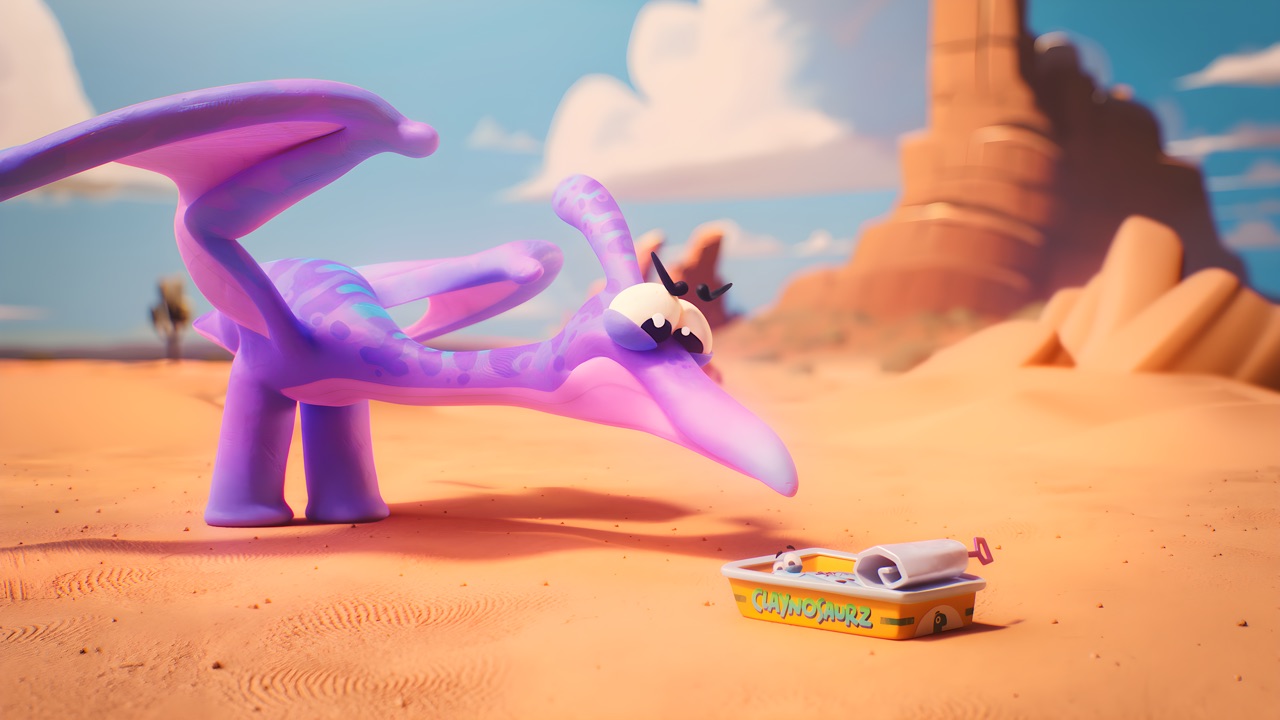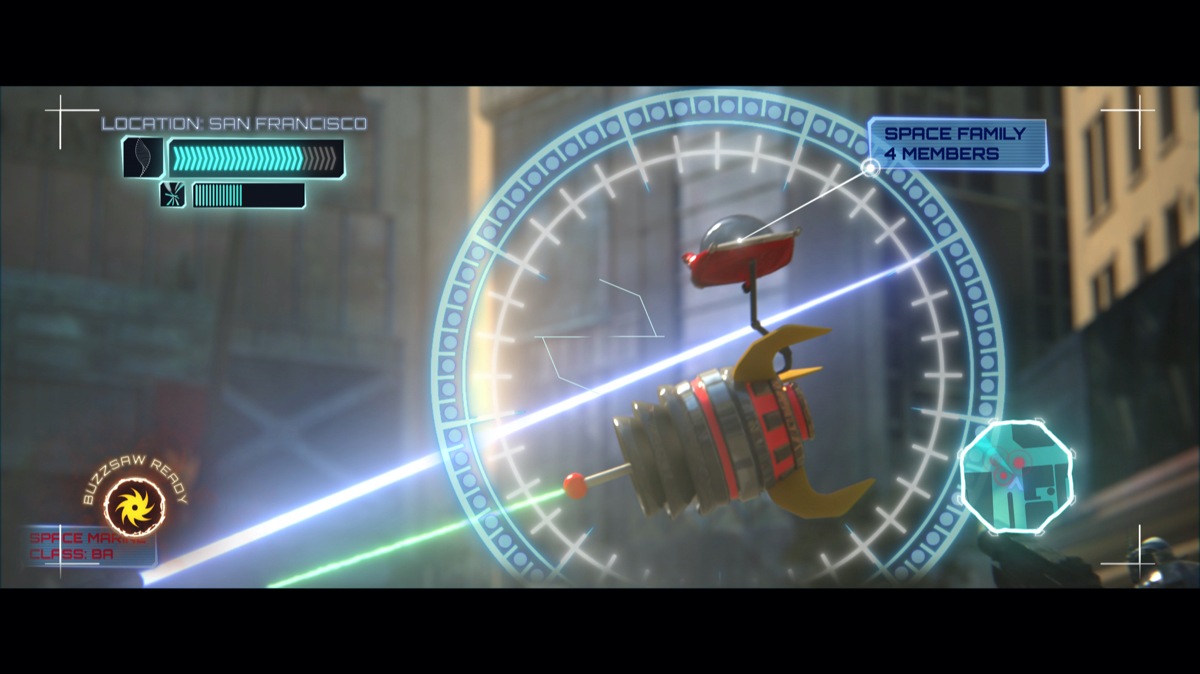Behind the cute Claynosaurz eco-system, and the tech used to realize10,000 ‘Clayno’ 3D animations.
The team behind Claynosaurz–a collection of 10,000 3D animated NFTs with a prehistoric theme–needed a way to render their characters. Indeed, it was not only the animated character, but also a still image, creating an additional 10,000 render tasks.
Ultimately, they would turn to cloud renderer Conductor for the job. Here’s the story of how Claynosaurz came to be, and how Conductor became key to making the characters possible. befores and afters spoke to Claynosaurz co-creators Nic Cabana and Dan Cabral.

b&a: Can you give me a brief overview of what Claynosaurz is, and how it works?
Nic Cabana and Dan Cabral: Claynosaurz sprung out of the idea to flip traditional brand-building on its head and create a new IP in a low cost, low friction way. Instead of jumping straight into creating longer form entertainment, which requires significant time and money and is high risk, we saw the emerging Web3.0 NFT space as a way to soft launch our characters and gain a following, while also helping to finance the project. At the same time, we’re NFT collectors ourselves so we were very thoughtful about what we wanted to build and how to release it. Claynosaurz is our overarching brand, and our Clayno NFT drops serve to extend that brand and reward our fans with collectibles.
Claynos are colorful, stylized versions of recognizable dinosaur species, designed to be universally appealing, and gender and culture agnostic. The first 10,000-piece Clayno NFT collection was released in November 2022 and quickly sold out. This collection featured six dinosaur types, with each NFT minted with a different pose, animation, and distinct skin pattern. The hope is that we’ll extend the Claynosaurz brand into other areas as more people discover it. We currently have a global team of about a dozen artists that work on Claynosaurz, most in a part time capacity, and the Clayno NFT collection has generated more than $30M of value.

b&a: How do you approach designing new characters and giving them distinctive personalities? Do these start as pencil sketches etc? How do you work them up into 3D models?
Nic Cabana and Dan Cabral: Most artists have a side project, and the Claynosaurz came from a design that was initially developed by Dan. He first drew them as pencil sketches from different views, then finessed the fine details to sort out the proportions. He also focused on making sure the facial expressions were readable, which is important because the designs are relatively simple. From there, we started using Zbrush for modeling and Maya for topology.
Our first character in production was Rex, and initially we thought we’d be able to use the same facial topology for the six characters for easier rigging, but we ended up rigging each character separately. Then Dan handed off the design for rigging and lookdev. We paid close attention to the textures and how they were applied; we knew if a texture fell apart on a seam or stretched weird, it would be instantly noticeable.

b&a: What approach do you take to animating them with a claymation style, and then rendering them, in terms of the tools and workflow? And for the teaser trailer, can you break down the challenges of realizing a fun promo piece?
Nic Cabana and Dan Cabral: The claymation style is more a result of our lookdev, but selling the motion comes down to having the right jiggle in the animation. Fortunately, many of our artists come from the VFX world so we know the importance of weight in animation. We started with basic blocky movements, then layered on weight until it felt right. Artists primarily used Autodesk Maya to create the animations, then we rendered with Arnold, submitting to Conductor through Maya to render with cloud-based compute resources. Textures were done with Adobe Substance Painter and Photoshop, and also some Blender.
Dialing in the look and movement of the characters was our initial focus, but then we started growing our team and artists skilled in environments came on board so we were able to build out the Claynotopia world. The environments were designed around the characters and from the ground up, from the rocks and pebbles to the trees. Once we saw the characters in these amazing environments, we knew that we had to create a trailer. We had so much amazing art to work with; our biggest challenge was choosing what to include.

b&a: And how did Conductor come in here? How have you used cloud rendering to help in your process?
Nic Cabana and Dan Cabral: The sheer amount of work that we needed to render for the Clayno NFT collection was daunting, and we needed to do so quickly and economically. Not only were we rendering 10,000 animations but each NFT was paired with a still image, creating an additional 10,000 render tasks. Buying hardware was immediately off the table; we’re a startup and a bunch of thousand dollar GPU cards was not in the budget (even if we could get ahold of them). We explored real-time rendering with a game engine but didn’t have any game developers on the team to guide that effort.
Also, we wanted to repurpose the assets in production and Arnold gave us the look we wanted for that. We looked at cloud-based rendering solutions in almost every major region, but none provided the confidence we needed to know that our assets were rendered with the appropriate licensing in place. So we started asking around, and a friend at a boutique animation studio recommended that we look at Conductor for cloud-rendering.

We started working with Conductor in April 2022, and initially focused on fine tuning our settings to optimize the look and cost of the renders. Our implementation was primarily managed by a lead animator and a technical director – roles that don’t typically deal with render wrangling – and they found it very straightforward to use.
Also, they were well-supported by the Conductor team. Once we were ready to go, we started our final render push in October and completed the necessary 20,000 tasks in about eight weeks. Due to the volume of tasks and the fact we were using Spot Instances, we submitted our work in batches, running a few hundred tasks at a time, to mitigate risk.
Spot Instances are great from a cost perspective since they are spare compute provided at a steep discount, but they can be reallocated to a higher paying customer at any moment, which would cause our renders to fail. Fortunately, we didn’t run into many issues on that front. We were also able to track render costs for each NFT through Conductor and use that data to inform pricing. Conductor was essential to our process and it continues to be an important tool for us.
Brought to you by Conductor:
This article is part of the befores & afters VFX Insight series. If you’d like to promote your VFX/animation/CG tech or service, you can find out more about the VFX Insight series here.


















